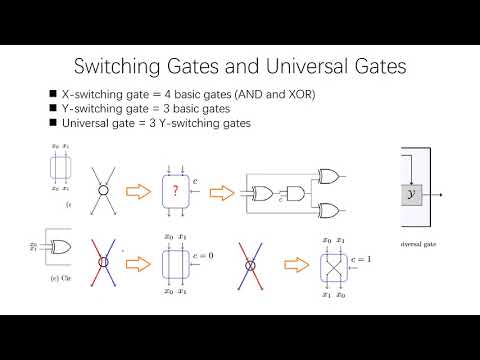CryptoDB
Pushing the Limits of Valiant's Universal Circuits: Simpler, Tighter and More Compact
| Authors: |
|
|---|---|
| Download: |
|
| Presentation: | Slides |
| Conference: | CRYPTO 2021 |
| Abstract: | A universal circuit (UC) is a general-purpose circuit that can simulate arbitrary circuits (up to a certain size $n$). Valiant provides a $k$-way recursive construction of UCs (STOC 1976), where $k$ tunes the complexity of the recursion. More concretely, Valiant gives theoretical constructions of 2-way and 4-way UCs of asymptotic (multiplicative) sizes $5n\log n$ and $4.75 n\log n$ respectively, which matches the asymptotic lower bound $\Omega(n\log n)$ up to some constant factor. Motivated by various privacy-preserving cryptographic applications, Kiss et al. (Eurocrypt 2016) validated the practicality of $2$-way universal circuits by giving example implementations for private function evaluation. G{\"{u}}nther et al. (Asiacrypt 2017) and Alhassan et al. (J. Cryptology 2020) implemented the 2-way/4-way hybrid UCs with various optimizations in place towards making universal circuits more practical. Zhao et al. (Asiacrypt 2019) optimized Valiant's 4-way UC to asymptotic size $4.5 n\log n$ and proved a lower bound $3.64 n\log n$ for UCs under the Valiant framework. As the scale of computation goes beyond 10-million-gate ($n=10^7$) or even billion-gate level ($n=10^9$), the constant factor in UCs size plays an increasingly important role in application performance. In this work, we investigate Valiant's universal circuits and present an improved framework for constructing universal circuits with the following advantages. [Simplicity.] Parameterization is no longer needed. In contrast to that previous implementations resorted to a hybrid construction combining $k=2$ and $k=4$ for a tradeoff between fine granularity and asymptotic size-efficiency, our construction gets the best of both worlds when configured at the lowest complexity (i.e., $k=2$). [Compactness.] Our universal circuits have asymptotic size $3n\log n$, improving upon the best previously known $4.5n\log n$ by 33\% and beating the $3.64n\log n$ lower bound for UCs constructed under Valiant's framework (Zhao et al., Asiacrypt 2019). [Tightness.] We show that under our new framework the UCs size is lower bounded by $2.95 n\log n$, which almost matches the $3n\log n$ circuit size of our $2$-way construction. We implement the 2-way universal circuits and evaluate its performance with other implementations, which confirms our theoretical analysis. |
Video from CRYPTO 2021
BibTeX
@inproceedings{crypto-2021-31150,
title={Pushing the Limits of Valiant's Universal Circuits: Simpler, Tighter and More Compact},
publisher={Springer-Verlag},
doi={10.1007/978-3-030-84245-1_13},
author={Hanlin Liu and Yu Yu and Shuoyao Zhao and Jiang Zhang and Wenling Liu and Zhenkai Hu},
year=2021
}

